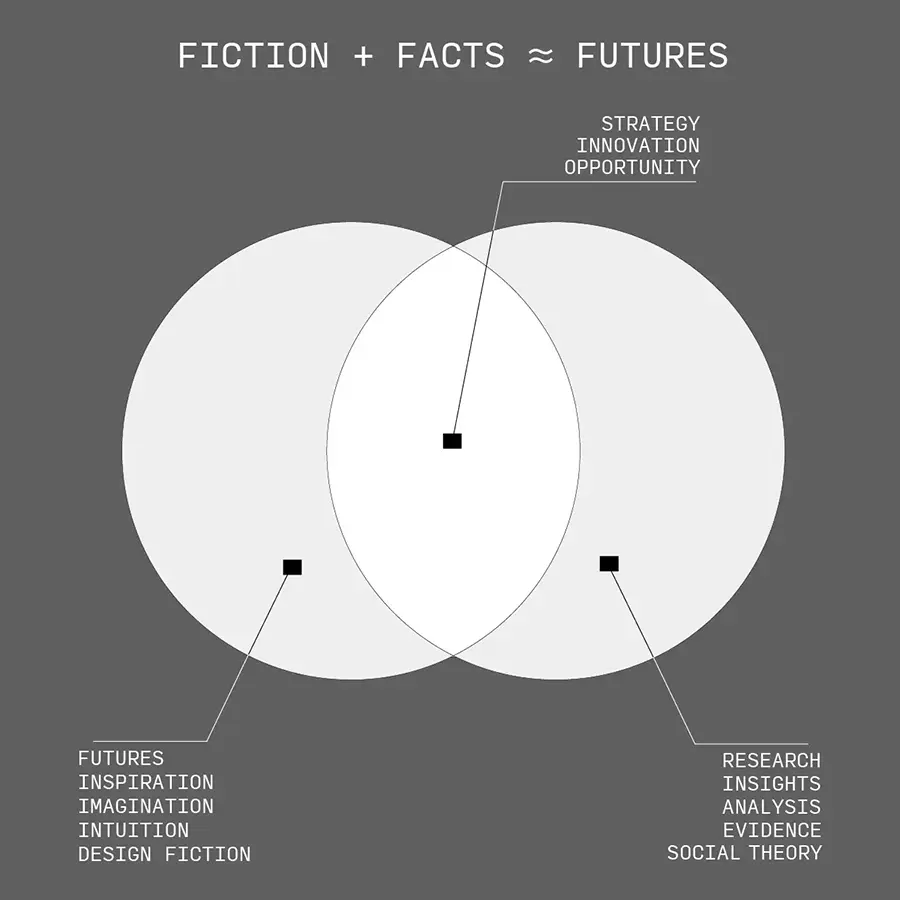
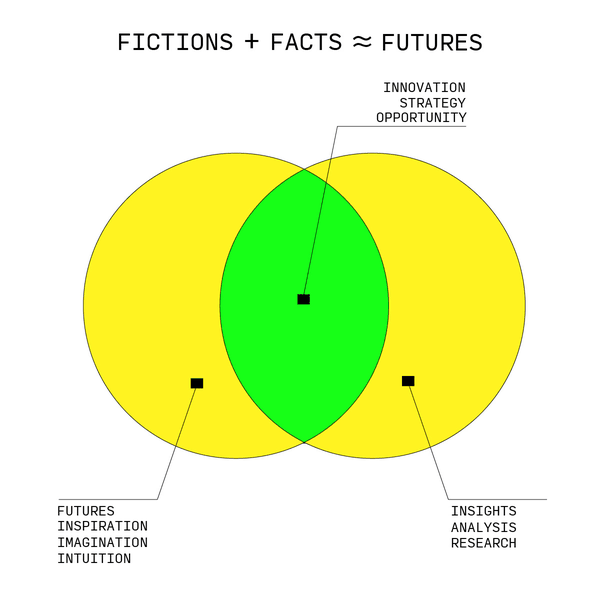
Design Fiction operates in the dynamic space between barely possibile and pragmatic reality, playfully messing with the tension between the grounded, pragmatic & reasonable, and the not true *yetwhat could be(come). Design Fiction feels leminal — like it’s here already but then again..not quite. It speculates playfully, without letting one know explicitly that it is speculating — which is why, parenthetically, that I insist that Design Fiction not be confused for science-fiction, which packages itself as science-fiction no matter what you try to do because it’s a science-fiction film shown in a theater or watched on a television, or a book that you buy to read science-fiction and that calls itself science-fiction, and is found in the science-fiction section of the bookshop. Design Fiction would be the new employee on-boarding manual for some speculative corporation or value-creation organization. Design Fiction is the replacement parts catalog for the Leica Voight-Kampf Machine, not P.K. Dick’s novel, ‘Do Androids Dream of Electric Sheep.’ Design Fiction, in fact, is the handbook for understanding your Android, like our ‘Androids Dream of Electric Sheep’.
Moving on though..
This (Design Fiction) approach ignites and inspires the kind of thinking that leads to farm-fresh ideas, while fostering the kind of engaged and thoughtful discussion that just makes one want to build something — to take action. The artifacts created through Design Fiction aren’t just imagined scenarios; they function as probes and materialized experiments in the form of things like advertisements, product specifications, instructions for things yet to be manufactured. They guide us through the complexities of the grounded world and reveal how our ideals and realities might intersect in impactful, transformative ways. It is a mindset as much as a methodology.
Design Fiction seeks to materialize imagined possibilities into artifacts that help us sense into, challenge, and expand our current understanding of the world.
Every action and decision we make in the present is informed by a mix of existing knowledge and the potentialities we foresee or imagine. In other words, the artifacts and speculative fictional objects we create through Design Fiction are not just exercises; they also become means for shaping reality by introducing new concepts that, while initially fictional, can lead to new norms as expressed through unexpected slightly adjacent and peculiar-seeming but still resonant products.
In this sense Design Fiction operates on the edge of what is known and what is imagined, continuously pushing the boundaries of both. Fictions become potential, simultaneous, or adjacent realities. In essence when one “does” Design Fiction, one is participating in a creative process that has the power to redefine what is considered possible. This dynamic relationship between imagination and knowledge, between fiction and fact, creates a feedback loop where each informs and shapes the other.
The integration of the imagined and the real is not only a method for sensemaking and future-making but also a way to explore and expand the human experience. The artifacts produced through this practice serve as tangible manifestations of this integration, providing a space for critical reflection, discussion, and, ultimately, the evolution of new knowledge and possibilities.
Lately I’ve been doing a bit of a tour of Metamodernism, mostly reading, listening, and watching. It’s one of those terms that can be seen as useful or not — and even possibly a distraction. In a helpful sense, Metamodernism describes a cultural, intellectual, and artistic movement characterized by a dynamic interplay between sincerity and irony, optimism and skepticism, hope and doubt. This can be useful in the context of Design Fiction which tends to avoid clearly stating utopian or dystopian points of view, but rather all is contingent of both all the time simultaneously. In this context, Metamodernism is not simply about reconciling these opposites but about embracing the tension between them to explore new possibilities. Metamodernism acknowledges the earnestness of the moderns search for meaning and truth, but simultaneously recognizes the irony and relativism of postmodernism. This always operating back-and-forth oscillation isn’t an effort to resolve the tension but rather acknowleding that to exist within the tension, the unresolvability, can be a source of creativity and innovation.
This aspect of Metamodernism helps me understand my own efforts to ‘ground’ Design Fiction — to give it a pragmatic basis that is based in some sort of reality, or sense of plausibility despite being a bit..well..weird, to draw Mark Fisher into the thinking.

When I make a ‘Design Fiction’ artifact of, for example, this Kohler toilet from some possible future we’re seeing a pragmatic possibility — “not a bad idea, actually..” while also living in a state somewhere between satire and irony, “gosh, this is, like..🤦🏽♂️”.
When applied to Design Fiction, Metamodernism is about using the tension between what we hope for and what we know, and using this tension actively as a means for playful exploration. Design Fiction is an approach that allows designers and thinkers to bring imagination into the conversation and to move fluidly between creating aspirational, imaginative futures, while grounding them in the pragmatic and acknowledging the limitations and challenges of the today.
Rather than seeing Design Fiction as purely speculative or only as a critique of the present, Metamodernism helps me see it it as a methodology that bridges the gap between what is, what could, and what should be/come. Design Fiction leverages the oscillation between the possible, the not true *yet and the actual, and it does this to generate new ideas, provoke thought & discussion, and create inspired action. The artifacts created in the Design Fiction space are not just ‘made up’; they serve as probes or experiments that help us navigate the complexities of the modern world, offering glimpses of how our ideals and realities might intersect in transformative ways.
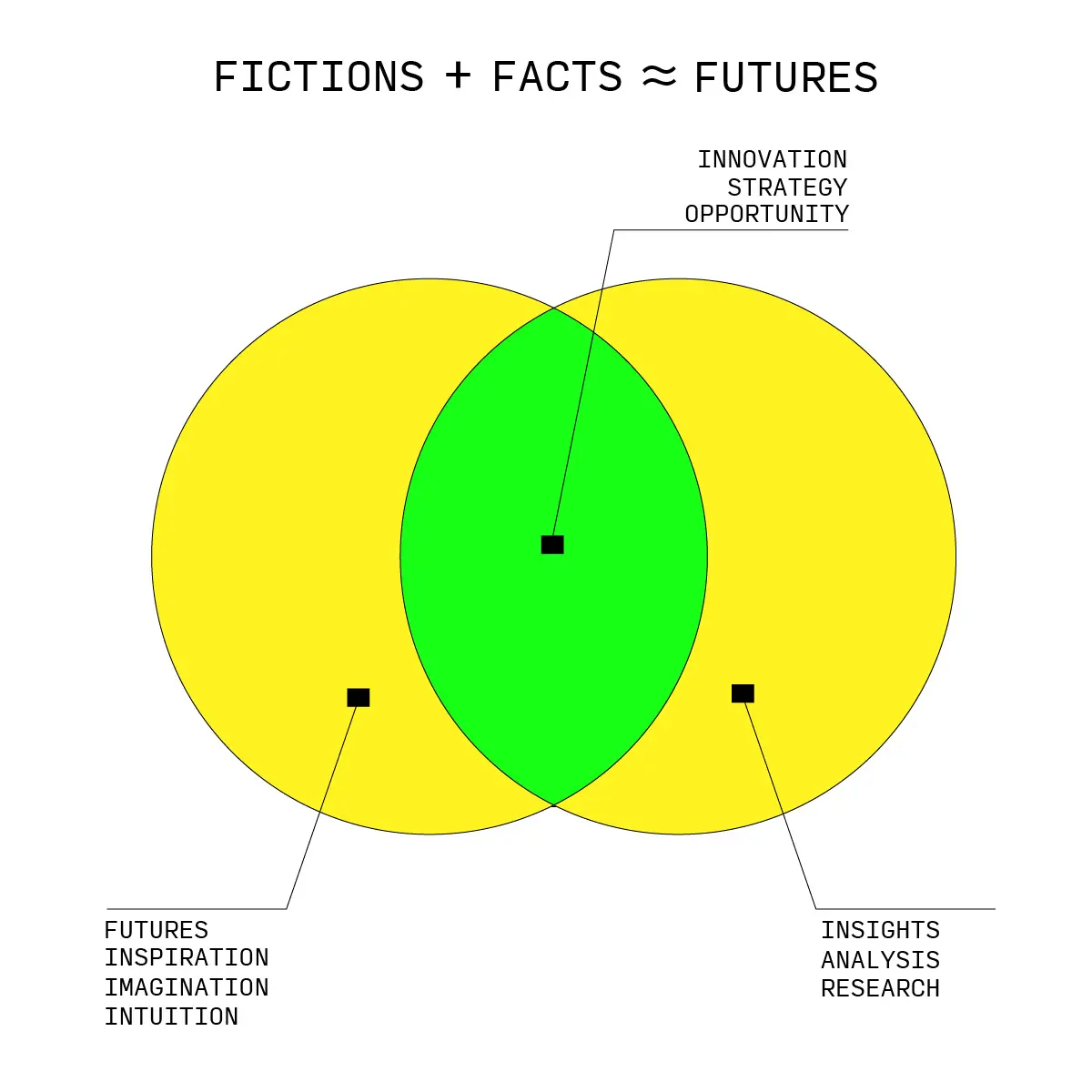
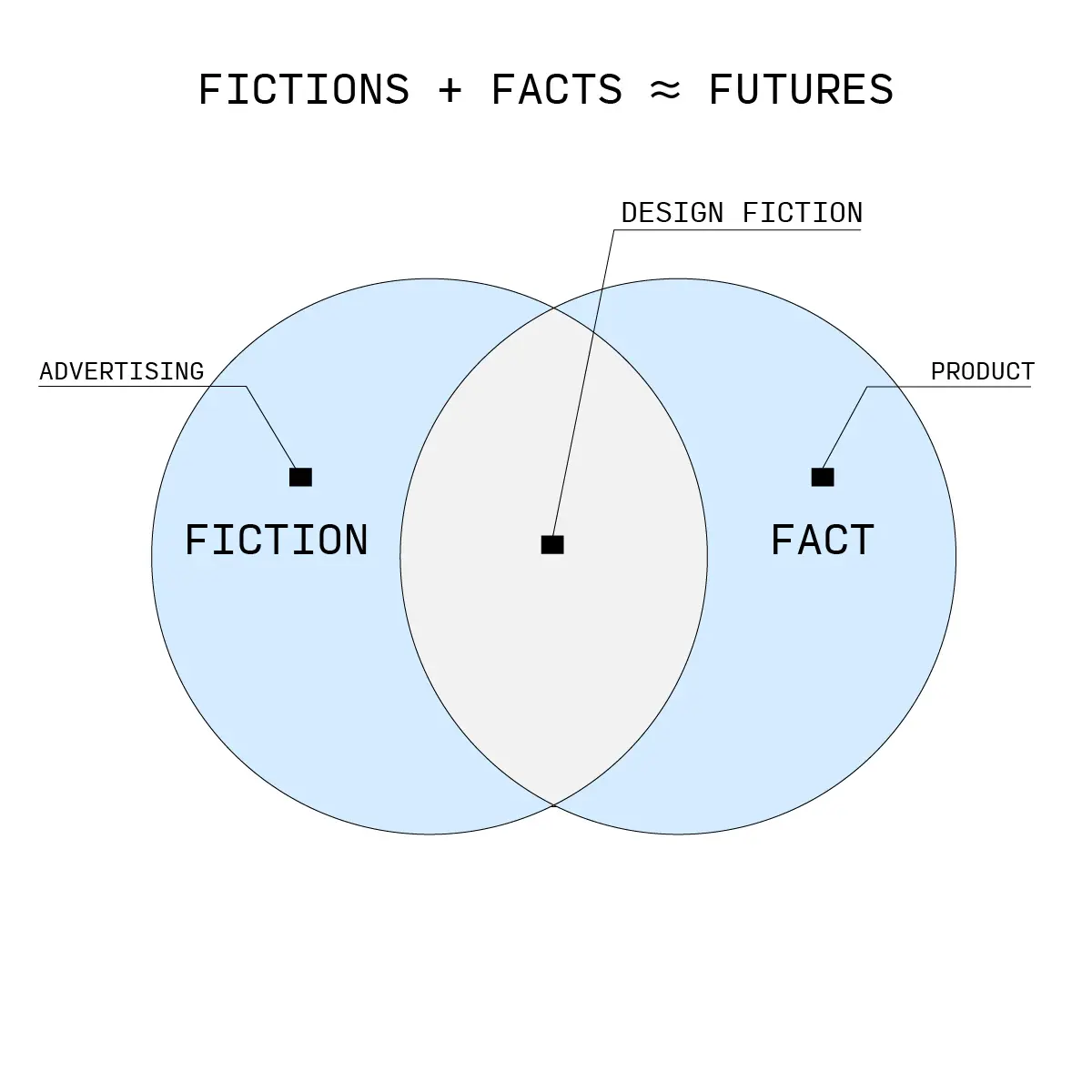
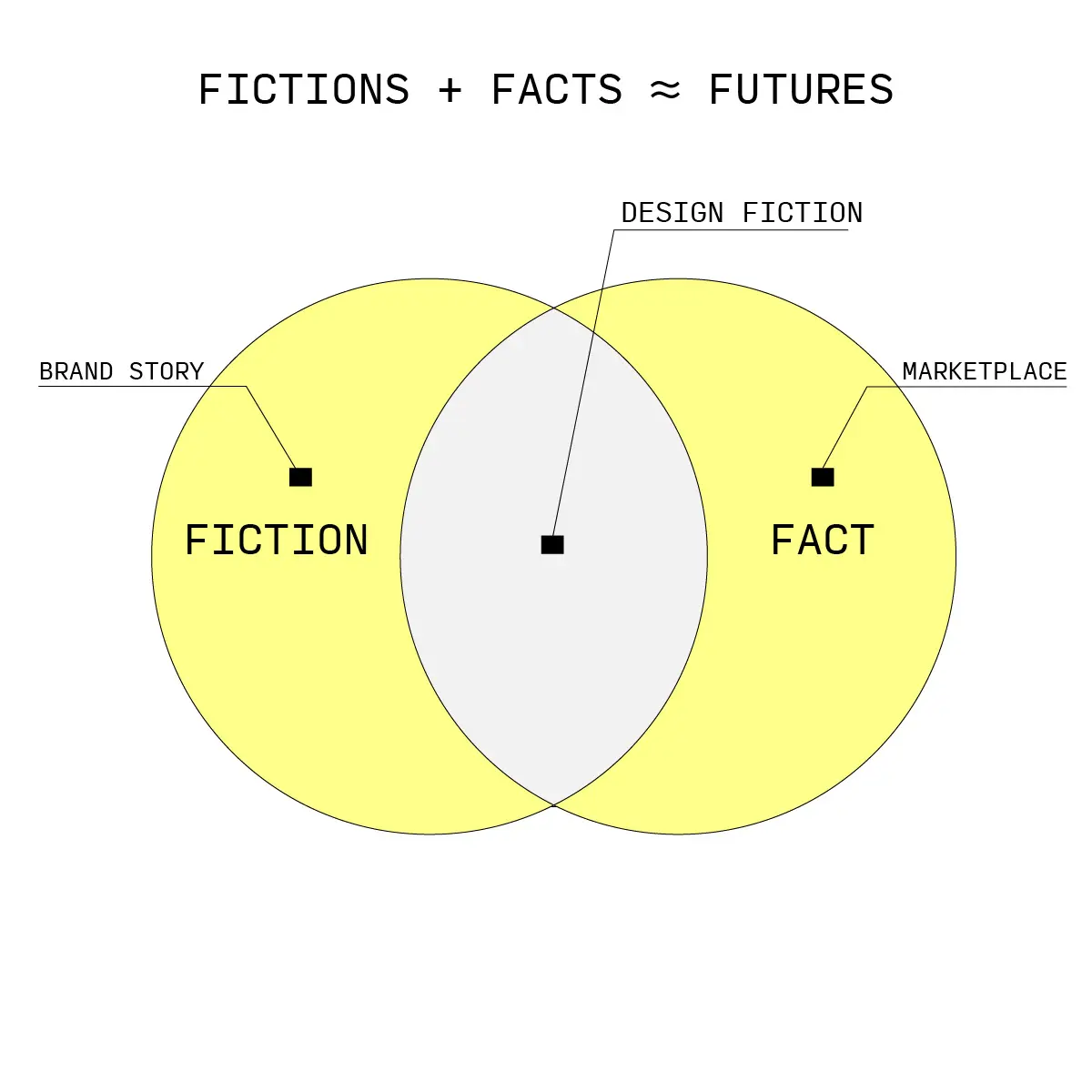
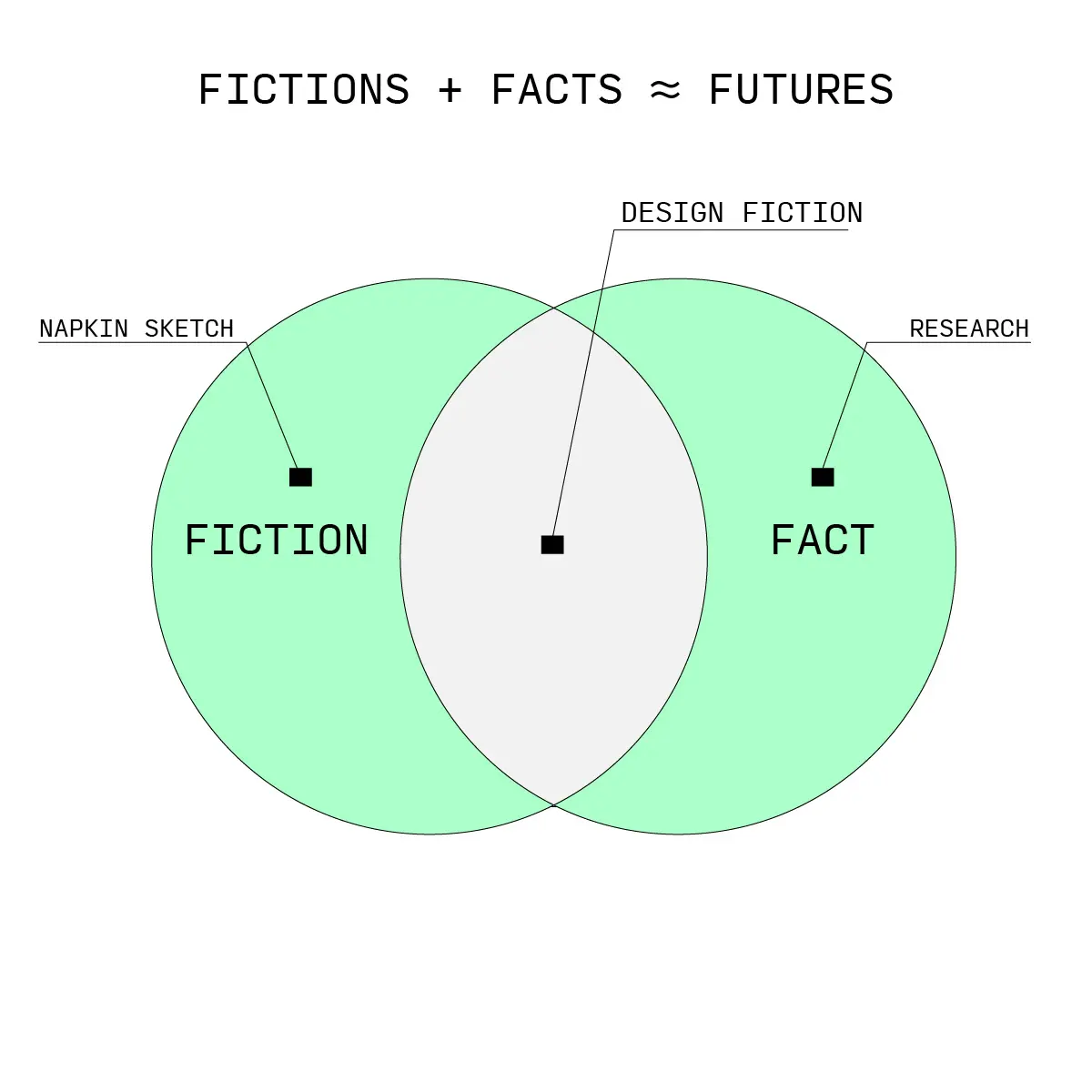
Metamodernism allows me to see Design Fiction as more than just speculative imagination or a critique of the present. It's a methodology that bridges the gap between what is, what could be, and what should become. Design Fiction thrives in the oscillation between the possible and the actual, between what is not true yet and what might be possible. This process generates new ideas, provokes thoughtful discussion, and inspires action. The artifacts of Design Fiction are not simply made up; they serve as probes or experiments, helping us navigate the complexities of the modern world and offering glimpses of how our ideals and realities might intersect in meaningful, transformative ways.